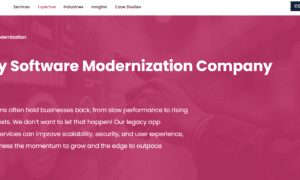education is no exception. From elementary classrooms to university lecture halls, technology is providing new tools and methods to enhance learning. Here’s a look at how technology is shaping a new age of education, making learning more accessible, engaging, and effective.
Personalized Learning Experiences
One of the most significant advantages of technology in education is the ability to personalize learning. With digital platforms, teachers can now customize lessons to fit the needs of each student. Adaptive learning software adjusts the difficulty of tasks based on a student’s performance, ensuring that each student is challenged just enough to grow without feeling overwhelmed. This personalized approach helps students achieve better outcomes by catering to their individual learning styles and paces.
Enhanced Interaction and Engagement
Technology also brings new life to how students interact with material. Multimedia tools such as videos, interactive simulations, and virtual reality (VR) offer immersive ways to engage with topics that textbooks cannot match. For instance, VR can transport students to ancient historical sites or inside a human heart, providing a firsthand experience of the subject matter that is both engaging and educational.
Collaboration Across Borders
Collaborative tools like discussion boards, group chats, and document sharing platforms allow students to work together regardless of their physical location. This connectivity not only facilitates the easy exchange of ideas but also prepares students for the globalized workforce they will join after graduation. By collaborating with peers from diverse backgrounds, students gain a broader perspective and a deeper understanding of the world.
Instant Access to Information
The internet provides unlimited resources at the click of a button. Students can access the latest research, databases, e-books, and academic journals anytime, which dramatically broadens their learning resources. This instant access to information encourages a culture of curiosity and self-directed learning among students.
Digital Literacy Skills
Navigating these technologies effectively requires digital literacy, a critical skill in today’s digital world. Schools are increasingly incorporating digital literacy into their curricula to ensure students are proficient in using technology and understanding its implications. This preparation is essential for both academic and professional success in virtually every field.
Efficient Management Tools
Educational technology also includes management tools that help both students and teachers streamline their academic tasks. For example, e Hall Pass is a digital tool that manages hall passes, making it easy for students and teachers to keep track of where students are during class time. Teachers and students can manage this process smoothly via a digital platform, and students can use Login eHallpass to sign in and out of classes. This system not only improves security by maintaining a clear record of student whereabouts but also reduces classroom interruptions, enhancing the learning environment. For more insights on digital tools like e HallPass, you can visit https://ehallpassinsider.com/.
Challenges and Considerations
While the benefits of technology in education are substantial, there are challenges to consider. Access to reliable internet and modern devices can be uneven, leading to a digital divide where some students benefit more than others. Furthermore, over-reliance on technology could potentially reduce face-to-face interactions, which are crucial for developing interpersonal skills.
Tips
- Start Small: Introduce technology gradually into your classroom. Begin with tools that are straightforward and widely supported, such as Google Classroom or educational videos from platforms like Khan Academy.
- Provide Training: Offer training sessions for both teachers and students. It’s crucial that everyone feels confident and competent in using new technologies to ensure they are used effectively.
- Encourage Creativity: Use technology not just as a way to consume information but also to create it. Encourage students to make digital presentations, videos, or blogs to express their understanding and perspectives.
Things to Consider
- Accessibility: Ensure all students have equal access to the technology used in the classroom. Consider issues like internet access and availability of devices.
- Balance: While technology can make lessons more engaging, it’s important to balance screen time with traditional classroom activities that foster social interaction and physical activity.
- Privacy and Security: Be cautious about the digital tools you adopt. Ensure they comply with privacy laws and protect student data. Always use secure platforms and educate students on the importance of maintaining digital privacy.
FAQs
What are the best educational technologies for beginners?
Start with user-friendly platforms like Quizlet for flashcards and study aids, or educational video content from TED-Ed and YouTube Edu to enhance lesson engagement.
How does technology improve student engagement?
Technology offers interactive and multimedia resources that make learning more dynamic and interesting, which can help maintain student attention and increase their motivation to learn.
Can technology replace traditional teaching methods?
No, technology should not replace traditional teaching methods but complement them. The goal is to blend both to provide a more rounded and effective educational experience.
Conclusion
Technology is undeniably revolutionizing education, offering new tools to enhance learning and teaching. As we continue to navigate this new age, it’s important to balance the use of technology with traditional educational values and practices. By doing so, we can ensure that technology acts as a bridge to knowledge rather than a barrier, making learning more effective and inclusive for all students.





























